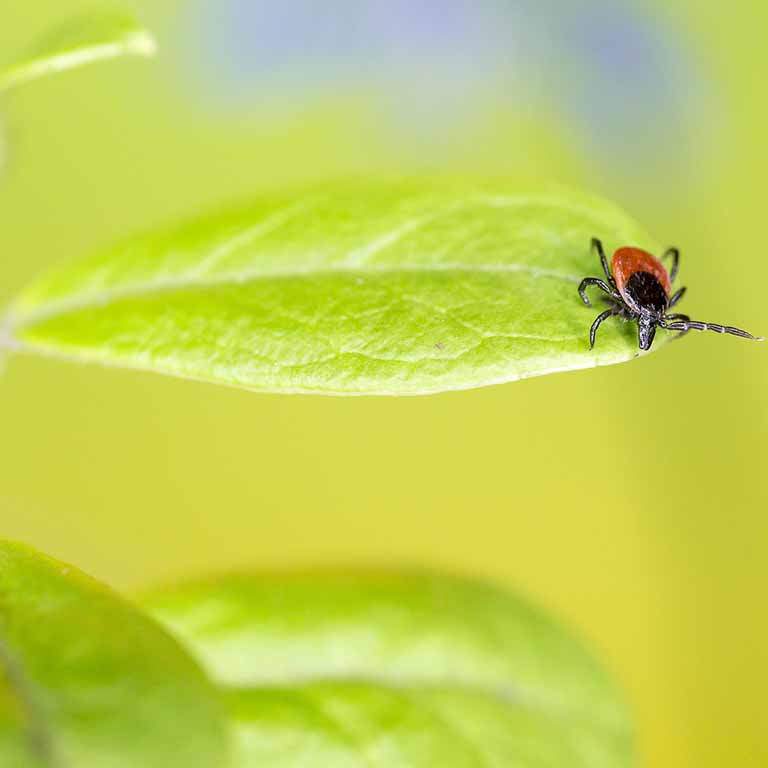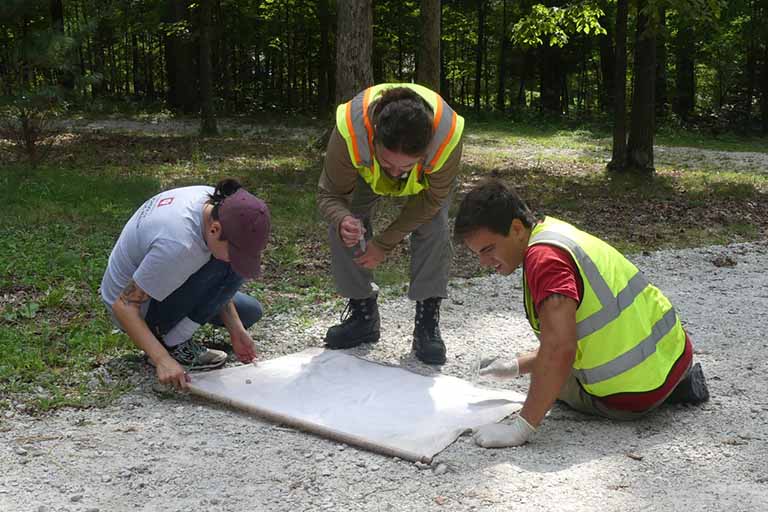As the COVID-19 pandemic drags into the heart of spring, more Americans are turning to the outdoors to lift their spirits.
While activities like birdwatching, hiking, or gardening can help ease the anxiety surrounding one infectious disease, it potentially places people at risk of being exposed to others, such as those transmitted by ticks.
Spring and summer are the most active time of year for ticks, including the blacklegged tick, the tick species responsible for transmitting Lyme disease to humans. It’s estimated that Lyme disease is contracted by more than 300,000 Americans each year. Without early diagnosis and treatment, the disease has the potential to wreak havoc on an individual’s health for years.
“Contracting a tick-borne illness can have long-lasting consequences,” said Karo Omodior, an assistant professor at Indiana University’s School of Public Health. “It could affect your ability to work, your relationships, or your quality of life. That’s why it’s so important that people be aware of the potential presence of ticks in places like parks, backyards, and green spaces.”
Currently, Omodior is leading a multi-year investigation into the presence of ticks near human habitation in Indiana to improve understanding of the risks ticks pose to human health. So far the research has shown that many Hoosiers don’t have to wander far from their backdoors to encounter tick habitat. Of more than 300 properties sampled in south and central Indiana by Omodior’s team, nearly 40 percent contained at least one tick, while about 20 percent showed signs of established tick populations.
“This is noteworthy because it indicates that many properties—especially those that attract wildlife—have the right conditions for ticks,” Omodior said. “That means people who frequent these areas are at greater risk of being bitten by a tick.”
Multiple factors are fueling tick population growth in the Midwest, including warmer year-round temperatures due to climate change, habitat fragmentation, and growing populations of preferred hosts, such as mice and deer. Environmental changes aren’t just allowing ticks to live longer and in greater numbers, they’re also expanding the geographic ranges of some species. Last year, IU researchers confirmed the presence of the Gulf Coast tick in Indiana.
Most cases of Lyme disease are reported in the Northeast and Upper Midwest—regions where the blacklegged tick, also known as the deer tick, is most commonly found. But blacklegged ticks have also been found in most Indiana counties and reports of Lyme disease are on the rise in the state. In its most recent five-year reporting period, the Indiana State Department of Health recorded more than twice as many cases of Lyme disease as the previous five-year period. Reports of other tick-borne diseases, such as Rocky Mountain Spotted Fever and ehrlichiosis, are also trending upward.
With COVID-19 continuing to circulate in the United States, Omodior said it’s especially important that people protect themselves from all potential health threats.
“The data indicates that people with preexisting conditions are more vulnerable to infections from COVID-19,” he said. “Anything that is taxing your immune system, including a disease introduced by a tick bite, will impede your ability to fight off this infection.”
To read about preventative measures property owners can take to manage tick populations in backyards and green spaces, review the Environmental Resilience Institute’s factsheet on the topic.
About the Prepared for Environmental Change Initiative
The Indiana University Prepared for Environmental Change Grand Challenge initiative brings together a broad, bipartisan coalition of government, business, nonprofit and community leaders to help Indiana better prepare for the challenges that environmental changes bring to our economy, health and livelihood. Announced in May 2017, Prepared for Environmental Change is working to deliver tailored and actionable solutions to communities across the state of Indiana.




